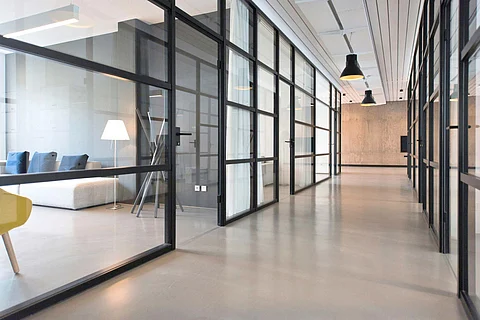
- NEWS
- the EDIT
- COMMENTARY
- BUSINESS
- LIFE
- SHOW
- ACTION
- GLOBAL GOALS
- SNAPS
- DYARYO TIRADA
- MORE

In a briefing by Cushman & Wakefield, the Philippine real estate sector is said to have maintained nuanced growth across its sub-sectors. This is supported by the recent monetary easing from the Bangko Sentral ng Pilipinas, stable unemployment and steady remittance inflows.
“While periods of heightened uncertainty typically dampen business and investment confidence, Asia Pacific’s strong fundamentals are helping to cushion the impact. Real estate markets in the region remain resilient but delays in decision-making by businesses and investors as they navigate the uncertainties are key risks in the near term,” Dr. Dominic Brown, head of International Research at Cushman & Wakefield, said.
Data reveals that, although APAC entered 2025 with strong momentum anchored by domestic demand and investment in real estate, expectations for GDP growth have moderated as organizations adjust to ongoing policy volatility.
“While risks are clearly elevated, historical trends suggest that Asia Pacific’s property markets are well-positioned to rebound quickly once greater global clarity emerges. It is therefore essential for occupiers and investors to stay nimble and adjust their strategies quickly so as to ride the wave of recovery once it happens,” Brown noted.
Locally, the Philippine property market exhibited sustained, if cautious, resilience in Q1 2025. According to the Q1 2025 Office MarketBeat and Investment MarketBeat reports, the vacancy rate for Prime and Grade A office space in Metro Manila rose slightly to 17.3 percent, influenced by the exit of POGO operators and subdued demand. Despite this, demand from the expanding IT-BPM sector continues to underpin office space uptake, presenting opportunities for asset optimization targeting this resilient segment.
“The overall vacancy rate for Prime and Grade ‘A’ office spaces in Metro Manila recorded a slight increase to 17.3 percent in Q1 2025, primarily driven by the return of office space following the exit of POGO operators and completion of new developments. Despite this, office demand continues to be supported by the expansion and consolidation activities of IT-BPM companies. As vacancy rates remain elevated, average headline rents declined slightly in Q1 2025 to P987 per sqm per month,” Tetet Castro, director and head of Tenant Advisory Group at Cushman & Wakefield, said.
Rental rates for Prime and Grade A office spaces within the CBDs are expected to remain stable amid elevated vacancy rates. However, the substantial influx of new supply, coupled with subdued office demand due to global economic uncertainties, may exert downward pressure on rental rates for developments outside the major CBDs.”
“The Philippine real estate market reflects nuanced sectoral trends shaped by global economic headwinds and shifting investor behavior. Residential developments, particularly in Metro Manila, are witnessing a cautious environment as foreign investors prioritize more liquid, lower-risk assets amidst persistent oversupply and elevated borrowing rates. This landscape offers local investors strategic advantages, such as reduced competition and the potential to acquire undervalued assets or negotiate more favorable terms. Notably, while the high-end residential condominium segment is expected to sustain capital value appreciation, the mid-end segment faces a slower recovery tied to oversupply and limited absorption rates. Current figures indicate approximately 450,000 mid- to high-end units in Metro Manila, with almost 15 percent unsold inventory equating to five to six years of supply at current demand levels. The market requires substantial inventory reduction before new project launches can be incentivized,” Claro Cordero, director and head of Research, Consulting & Advisory Services at Cushman & Wakefield, said.
Other real estate sectors also exhibit distinctive trajectories. The retail segment, challenged by global trade friction and evolving consumer preferences, is finding opportunities in localized demand and ongoing urbanization in provincial areas. Industrial assets, particularly logistics and warehousing, are gaining favor due to robust e-commerce growth and supply chain transformation, though risks from geopolitical uncertainties and technological advancements persist. The hotel sector demonstrates encouraging momentum, driven by the revival of large-scale events and international travel, alongside sustained corporate demand.
“On a global scale, real estate investment markets demonstrate evolving trends, including the shift towards sustainable developments and digitalization within asset management. Locally, these trends present both opportunities and competitive pressures. Philippine developers and investors must strategically position themselves to cater to increasing demand for energy-efficient buildings and smart infrastructure expected to rise alongside consumer spending,” Cordero added.
